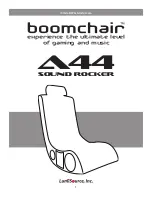
WPLLD Site Prep and Installation Guide
Verifying WPLLD Communications Capability
3-3
2. After the 240 Vac lines are connected to the AC Interface Module, observe the 4 signal strength LEDs on the front of
the module (see Figure 3-1). With no transducers installed, these LEDs provide an indication of the noise level
present on the AC lines. Ideally, no LEDs should be lit at this point; typically, communications will be successful if
no more than the first LED is lit.
3. If more than the first LED is lit, there is noise at the site which could interfere with WPLLD communications. The
source of this noise should be identified and eliminated. Even if only the first LED is lit, it is still desirable to
eliminate the noise. To do this, check the site for the presence of other wireless devices which transmit using the AC
power lines, such as wireless intercoms, light switches, dimmers, and phone extension jacks. If unplugging one of
these devices causes the LED to go off, that device is not compatible with WPLLD and should not be used.
IMPORTANT! Do not unplug equipment required for site operation without permission of the site operator. Comple-
tion of this procedure may require the station to be taken out of service.
4. Non-wireless devices can also be noise sources. Motor speed controllers, neon, fluorescent, or HID lights, light
dimmers, computers, or other electronic devices can cause noise. Unplug any of these devices, one at a time, to
determine if the noise is eliminated. Once the device is identified, it may be possible to reduce the line noise by using
a line filter or an isolation transformer on input power to the device instead of removing it completely.
5. Any device having an intermittent or faulty wiring connection, or an electric motor which is not running properly, can
cause noise. Again, any powered device should be unplugged to determine if it is causing noise. Faulty connections
or bad motors must be repaired or replaced prior to installing the WPLLD system.














































